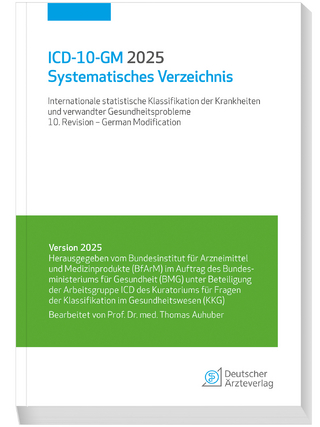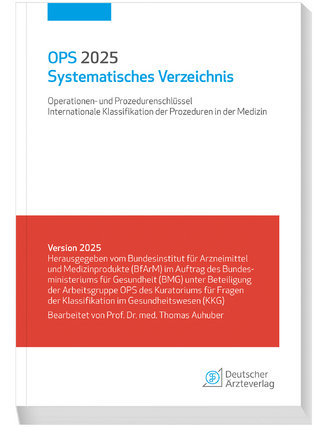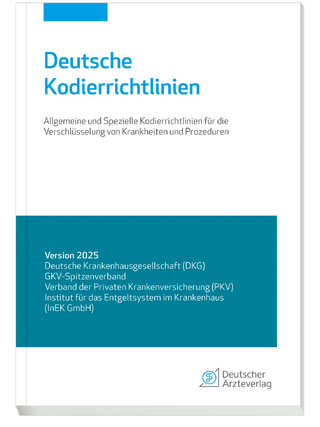
Data Science in the Medical Field
Academic Press Inc (Verlag)
978-0-443-24028-7 (ISBN)
Prof. Seifedine Kadry’s research focuses on data science, education using technology, system prognostics, stochastic systems, and applied mathematics. He is an ABET (Accreditation Board for Engineering and Technology) Program Evaluator for computing and engineering technology. He is a Fellow of IET, IETE, and IACSIT. He is a distinguished speaker for the IEEE Computer Society. Dr. Shubham Mahajan is a distinguished academic and professional member of prestigious organizations such as IEEE, ACM, and IAENG. He earned his B.Tech. from Baba Ghulam Shah Badshah University, M.Tech. from Chandigarh University, and Ph.D. from Shri Mata Vaishno Devi University in India. Currently, he is pursuing a Post Doctoral degree in Applied Data Science at Noroff University College in Norway and serves as a Visiting Assistant Professor at Al-Ahliyya Amman University in Jordan. Dr. Mahajan specializes in artificial intelligence and image processing, holding eleven Indian patents along with one each from Australia and Germany. His extensive publication record includes over 70 articles in peer-reviewed journals and conferences, covering topics such as image segmentation, data mining, and machine learning. He received the 'Best Research Paper Award' from ICRIC 2019, published in the Springer LNEE series. Throughout his career, Dr. Mahajan has earned numerous accolades, including the Best Student Award and the Emerging Scientist Award. He has also actively represented IEEE as a Campus Ambassador and has fostered international research collaborations. His commitment to advancing knowledge and innovation in his field is evident through his various contributions and achievements.
1. PPH 4.0: a privacy-preserving health 4.0 framework with machine learning and cellular automata
2. An automatic detection and severity levels of COVID-19 using convolutional neural network models
3. Biosensors and disease diagnostics in medical field
4. Brain tumor recognition and classification techniques
5. Identifying the features and attributes of various artificial intelligence-based healthcare models
6. Classification algorithms and optimization techniques in healthcare systems representation of dataset in medical applications
7. A knowledge discovery framework for COVID-19 disease from PubMed abstract using association rule hypergraph
8. Predictive analysis in healthcare using data science: leveraging big data for improved patient care
9. Data science in medical field: advantages, challenges, and opportunities
10. Decentralizing healthcare through parallel blockchain architecture: transmitting internet of medical things data through smart contracts in telecare medical information systems
11. Machine learning in heart disease prediction
12. U-Net-based approaches for brain tumor segmentation
13. Explainable image recognition models for aiding radiologists in clinical decision making
14. Prediction of heart failure disease using classification algorithms along with performance parameters
15. Cancer survival prediction using artificial intelligence: current status and future prospects
16. Heart disease prediction in pregnant women with diabetes using machine learning
17. Healthcare using image recognition technology
18. Integration of deep learning and blockchain technology for a smart healthcare record management system
19. Internet of things based smart health and attendance monitoring system in an institution for COVID-19
20. Medical diagnosis using image processing techniques
21. Harnessing the potential of predictive analytics and machine learning in healthcare: empowering clinical research and patient care
22. Predictive analysis in healthcare using data science
23. Recommender systems in healthcare—an emerging technology
24. Robotics: challenges and opportunities in healthcare
25. A new era of the healthcare industry using Internet of Medical Things
26. Single cell genomics unleashed: exploring the landscape of endometriosis with machine learning, gene expression profiling, and therapeutic target discovery
27. Analyzing the success of the thriving machine prediction model for Parkinson’s disease prognosis: a comprehensive review
| Erscheinungsdatum | 28.09.2024 |
|---|---|
| Verlagsort | San Diego |
| Sprache | englisch |
| Maße | 152 x 229 mm |
| Gewicht | 450 g |
| Themenwelt | Mathematik / Informatik ► Informatik ► Datenbanken |
| Informatik ► Weitere Themen ► Bioinformatik | |
| Medizin / Pharmazie ► Allgemeines / Lexika | |
| Wirtschaft ► Betriebswirtschaft / Management ► Unternehmensführung / Management | |
| ISBN-10 | 0-443-24028-0 / 0443240280 |
| ISBN-13 | 978-0-443-24028-7 / 9780443240287 |
| Zustand | Neuware |
| Informationen gemäß Produktsicherheitsverordnung (GPSR) | |
| Haben Sie eine Frage zum Produkt? |
aus dem Bereich


